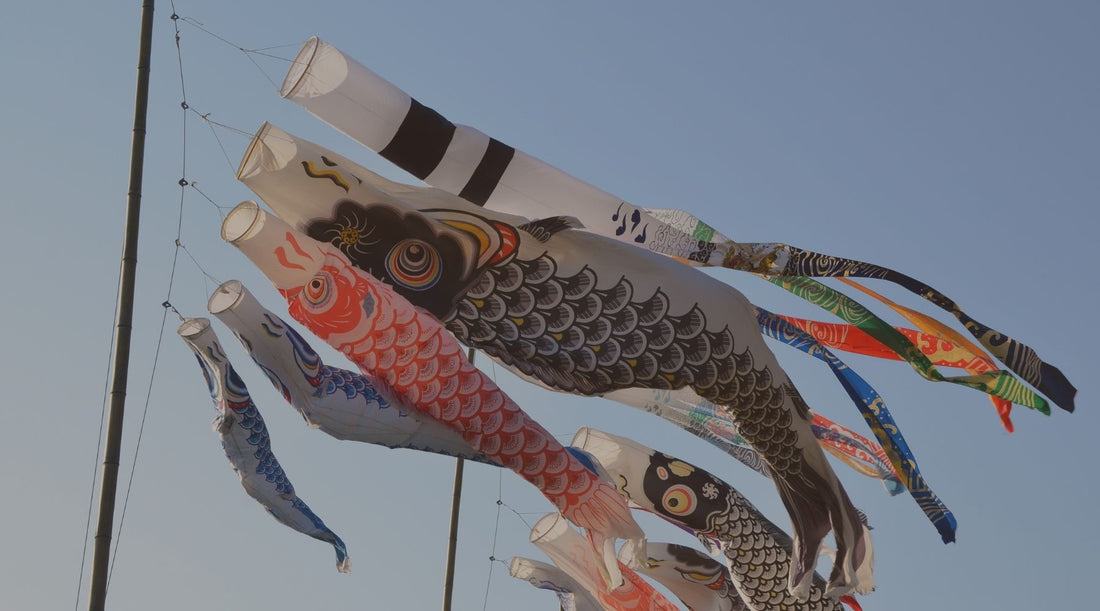When reading about Japanese festivals, you may have heard of Hinamatsuri, the “Girl’s festival” (if not, take a look at our article!). However, did you know there also was a similar festivity for boys ? Celebrated on May 5, Tango-no-Sekku (端午の節句) or the Iris festival (菖蒲の節句) is also one of the 5 sekku (五節句), mirroring the passing of the seasons.

An ancient tradition :
With roots dating back to the 6th century, the Tango-no-Sekku was originally celebrated in the Imperial court, as an adaptation of an old Chinese tradition. Originally signifying the onset of summer and the rainy season, this Matsuri took on many different forms and names throughout history. The modern version is said to have originated in the Edo Era, in the families of Bushi (武士 , feudal warriors). Parents started praying to the deities for the social success of their son and performing all sorts of rituals, with some still being observed nowadays.
How to celebrate Tango-no-sekku :
To wish a healthy growth to their son, families often put up Carp Streamers and Doll Warriors (known as Kintaro, the baby warrior) and War Helmet (kabuto) decorations. Known in Chinese mythology as the only fish able to leap the Ryumon waterfall and turn into a Dragon, carps (鯉) have long been a symbol of good fortune and social success in Asia. By displaying helmets and a Kintaro (a boy said to have beaten a bear in a Sumo wrestling), parents wish for their boys strength and a healthy growth.

Also during this day, having a bath scented with iris leafs or wearing leafs around the head is a popular custom, in hope of flushing out the toxins.
Chimaki and Kashi-mochi: what to eat at this matsuri
What would be a Japanese celebration without food ? As for any Matsuri, the 5th of May is the occasion to enjoy some unique and highly characteristic meal. Compared to the Girl’s festival, the Boy’s one is devoid of opulent dishes and features rather sober plates instead. Japanese often enjoy Chimaki (sweet paste wrapped in an Iris or Bamboo leaf) to keep evil spirits away. Another popular dish is the Kashiwa-mochi, wrapped in Oak (kashiwa in Japanese). Did you know that Oakes does not drop old leaves before sending out new shoots ? From there came the belief that eating Kashi-mochi would prevent you from dying before having an heir, and that your descendant will be robust and prosper. As for most of Japanese dishes and sweets, you will find it to be succulent when served with the authentic Café Genshin!

From “Boys’ day” to “Children’s festival: Tango-no-Sekku nowadays
Following a government decision from 1948, the 5th of May was proclaimed a day to appreciate all children and celebrate the sacrifices made by mothers, named Kodomo-No-Hi.
These days, the festival is celebrated nationally as a part of the Golden Week, a week of holiday at the end of April and beginning of May filled with Matsuri and commemorations.

For those of you wishing to enjoy a typical party-time Japanese dish, try making some Hand-Rolled Sushi (手巻き寿司), easy to make and ready-to-eat. To accentuate the holiness of that day, use our unique rice Isehikari, initially coming from the most sacred sanctuary of Japan, Ise-Jingu.
Looking for things to do during the Golden Week ? Look for no more!

